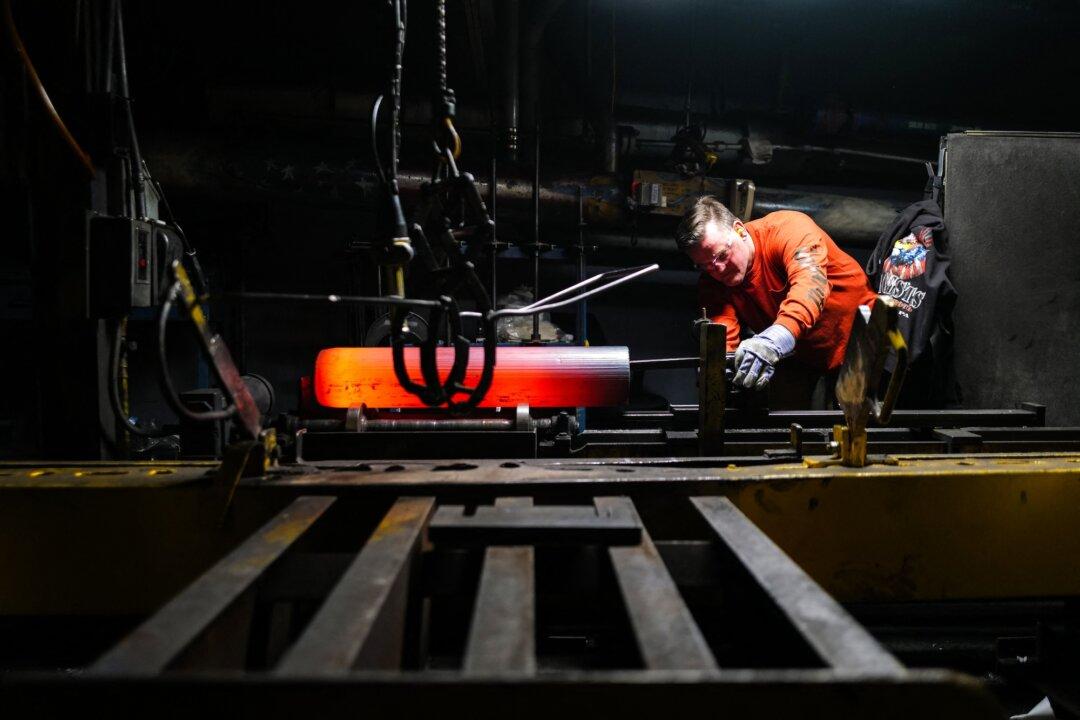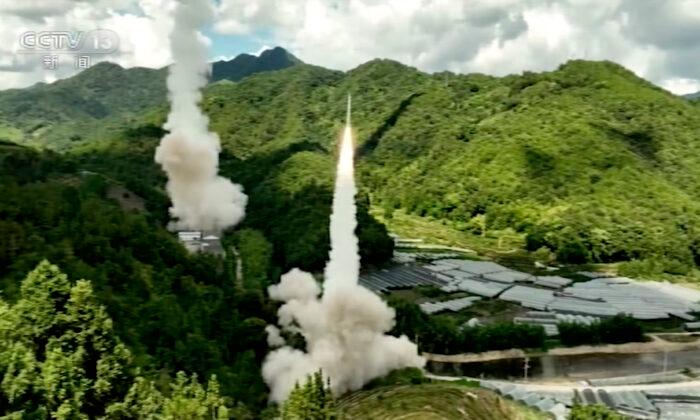Airshow China—the biannual exhibition held in Zhuhai city where China displays its latest tactical weapons—was held this year from Nov. 6 to 11. While Chinese reports said the show faced some financial constraints, it offered a host of new aircraft and unmanned aircraft systems, which are the focus of this first article in a new four-part series.
Since 1996, China has hosted the show, also called the Zhuhai Airshow at the Zhuhai Jinwan Airport in the southern province of Guangdong. In 2014, the air and space technology show expanded to include a large display dedicated to ground force systems.
While the 12th Zhuhai Airshow features weapons similar to what is used by China’s People’s Liberation Army (PLA), most systems on display are unused. This stems from reforms to PLA logistics implemented in 1998 that subsidized competing companies instead of forcing mergers, resulting in great redundancy in China’s weapon development sector.
Chinese Aeroengine Progress
One of the PLA’s perennial Achilles’ heels has been its inability to develop and produce powerful and reliable indigenous large turbofan engines for military and civil aircraft. But one of the highlights of the 12th Zhuhai show was the first appearance of a Chengdu Aircraft Corporation (CAC) J-10B fighter modified with a Chinese-designed, 13-ton thrust Shenyang-Liming WS-10BC turbofan, with an indigenous thrust vector control (TVC) system.There is a good chance China employed Russian “consultants,” as the first indications of this TVC system that emerged in early 2014 showed the influence of recent Russian TVC designs employing TVC “petals” with a pivot system.
Demonstrated in limited use on U.S. and Russian fighters since the mid-1990s, TVC enables gravity-defying post-stall maneuvers. But it remains to be seen whether this engine will come to equip the PLA Air Force’s (PLAAF) newly produced J-10, or Shenyang Aircraft Corp.’s J-16 fourth-plus generation fighter. Although such “supermaneuverability” is useful for close combat, it is expensive and can be negated by current, more maneuverable, all-aspect fifth-generation, imaging-infrared (IIR) guided air-to-air missiles (AAMs). Nevertheless, the modified J-10B’s appearance signifies growing Chinese confidence in their turbofan technology.

Chengdu J-20 Fifth Generation Fighter Shows Its Teeth
CAC’s J-20 fifth-generation fighter made its second appearance at Zhuhai, but for the first time exposed its internal weapons bays to show it can carry up to four 200-kilometer range PL-15 AAMs and two 20-plus kilometer range IIR guided PL-10 AAMs. The PL-15 very likely outranges the Raytheon AIM-120C, the most numerous medium-range AAM in U.S. service. A no-show was the J-20’s intended main engine, the WS-15, a reported 15-to-18-ton thrust turbofan, which the South China Morning Post reported was due to its many development problems.Previous informal Chinese reports have noted the PLA would first acquire about 100 J-20s with a better version of the less powerful WS-10A, and then about 300 more WS-15 powered versions. At the Zhuhai show, former J-20 chief designer Yang Wei hinted strongly that the WS-15 on the J-20 will have a TVC system. With an estimated 1,000-kilometer (approx. 621 miles) combat radius, the J-20 can attack U.S. and Japanese fighters beyond the Ryukyu Island Chain. The U.S. Air Force now has less than 180 of its fifth-generation Lockheed-Martin F-22A fighters.

China Hints at Sixth Generation Fighter
Like the United States, United Kingdom, and Russia, China is developing a next-generation, or sixth-generation, combat aircraft. During a mid-2017 conference appearance, Yang Wei, likely the sixth-generation fighter’s lead designer for the Aviation Industries Corporation of China (AVIC), stated that China was developing its next-generation fighter and that it would feature a “science fiction” like design, have advanced data links to enable cooperation with other platforms, and make use of new artificial intelligence (AI) technology.At Zhuhai, an AVIC video showed the J-20 and a concept sixth-generation fighter cooperating with a swarm of unmanned combat aerial vehicles (UCAVs) launched from a Xian Aircraft Corporation Y-20 heavy transport. The United States’ and UK’s sixth-generation fighters are expected to have the same capability.
The AVIC video showed that China’s sixth-generation design will not use vertical stabilizers and will be highly stealthy, as are U.S. and British concepts. The U.S. and Chinese sixth-generation fighters may emerge close to the same time, in the early-to-mid-2030s.

New Flying Wing UCAVs
China now has perhaps the world’s largest and most innovative unmanned aircraft development sector. A significant revelation for the Zhuhai show was the emergence of multiple “flying wing” UCAVs, with an AVIC video hinting at the development of a large flying wing UCAV for future PLA Navy aircraft carriers.Though expected to fly for the first time in 2019, the China Aerospace Science and Technology Corporation (CASC) displayed a model of its Rainbow-7 (CH-7) “cranked delta” flying wing UCAV. With a two-ton weapons payload, the CH-7 is expected to have an endurance of 12 hours and to be highly stealthy.
The competing China Aerospace Science and Industry Corporation (CASIC) displayed a model of its Skyhawk flying wing UCAV, with a more blended fuselage area and wing, but did not release any performance data.
On the flight line was a model of another “cranked delta” flying wing UCAV from AVIC. It is possible this design, which is closer to that of the Northrop-Grumman X47B carrier UCAV test aircraft, may come from the Chengdu Aircraft Corporation. At Zhuhai, an AVIC video showed a much larger and twin-engine UCAV closer in configuration to this model operating from a Chinese aircraft carrier. In addition, a division of the China Shipbuilding Industry Corporation (CSIC) revealed its HK-5000G, a smaller straight-wing, turbofan-powered UCAV designed specifically for aircraft carrier operations.

New Cargo UAVs
New “private” company entrants into China’s UAV sector teamed up with innovative Chinese cargo airlines hold the potential of giving the PLA the world’s first ”auxiliary” force of large, unmanned, logistic support aircraft.New Chinese cargo airline S7 is an investor in the Tengoen Corp.’s plans to build a large 20-ton payload capable UAV. At Zhuhai, Tengoen—for the first time—displayed a model of its “TC” twin-engine, twin-boom UAV configured to carry a large cargo pod or other pods containing weapons, electronic warfare, or communication payloads, or a large airborne warning and control system (AWACS) radar. Tengoen has the ambition to build its larger “TD” UAV, powered by four or eight turbofan engines, carrying a 20-ton payload pod.
A new company, ZT Guide Control, introduced its FL-2 UAV capable of carrying up to six tons a range of 7,000 kilometers (approx. 4,349 miles). As all Chinese airlines are integrated into “militia” support units for the PLA Air Force, it follows that future UAV cargo airlines would also support PLA domestic and international military operations.

Final Comments
Financial glitches notwithstanding, the 12th Zhuhai Airshow was full of indications that China’s aircraft sector is rapidly developing modern combat aircraft and new unmanned aircraft. The quick appearance of the J-10 modified with thrust vector control (TVC) shows Chinese confidence in their WS-10 Taihang turbofan.While the more powerful WS-15 did not appear, it is under development and eventually will power a version of the J-20 fifth-generation fighter.
The decision to reveal the J-20’s weapons capabilities is a reminder that China intends to contest control of the air very far from its shores, a real threat to Taiwan which lacks a fifth-generation fighter. China’s rapid development of new UCAVs will place even greater pressure on the defenses of its democratic neighbors such as Japan, South Korea, Taiwan, and the Philippines.
China also has a clear ambition to place large UCAVs aboard aircraft carriers as part of a diverse air wing. But it should not be discounted that China may also develop aircraft carriers with only unmanned aircraft.





